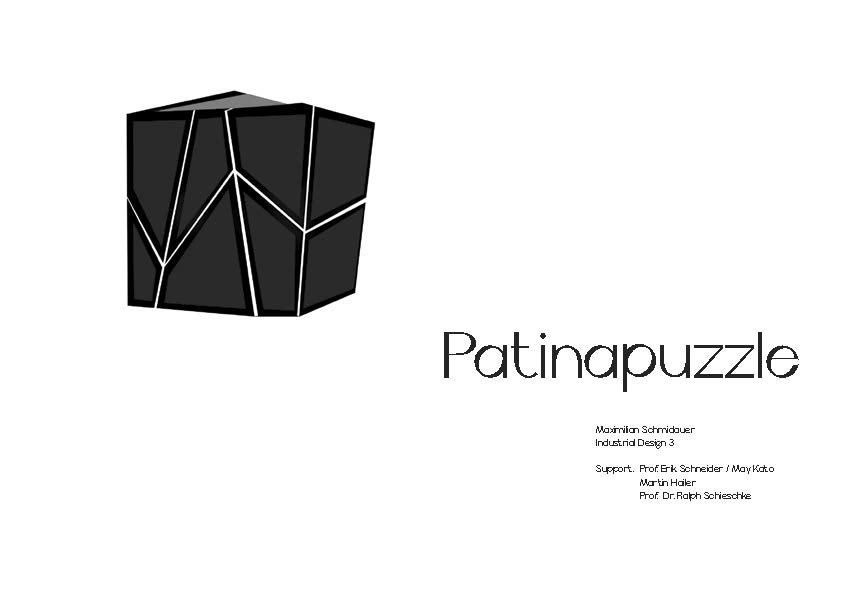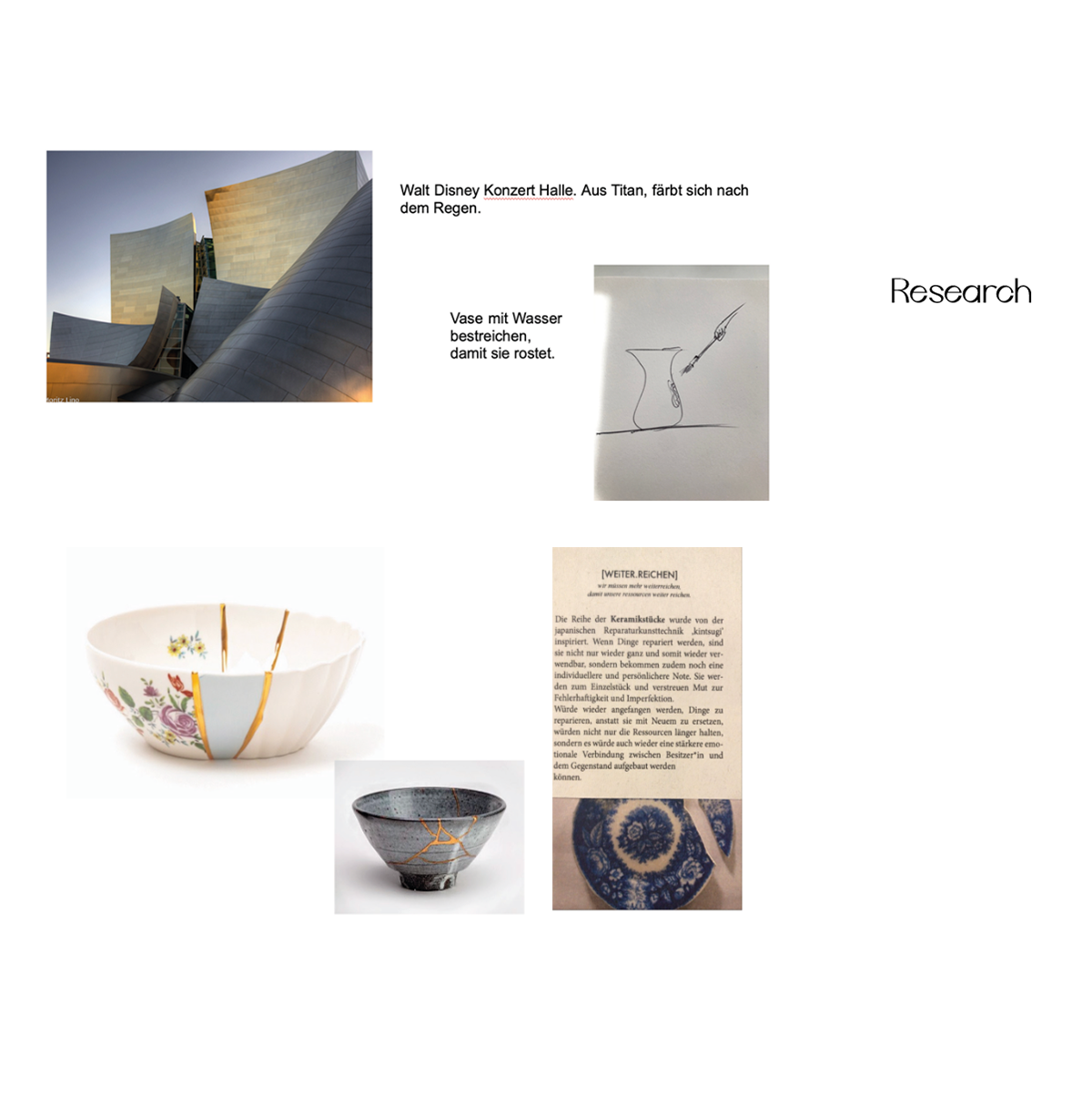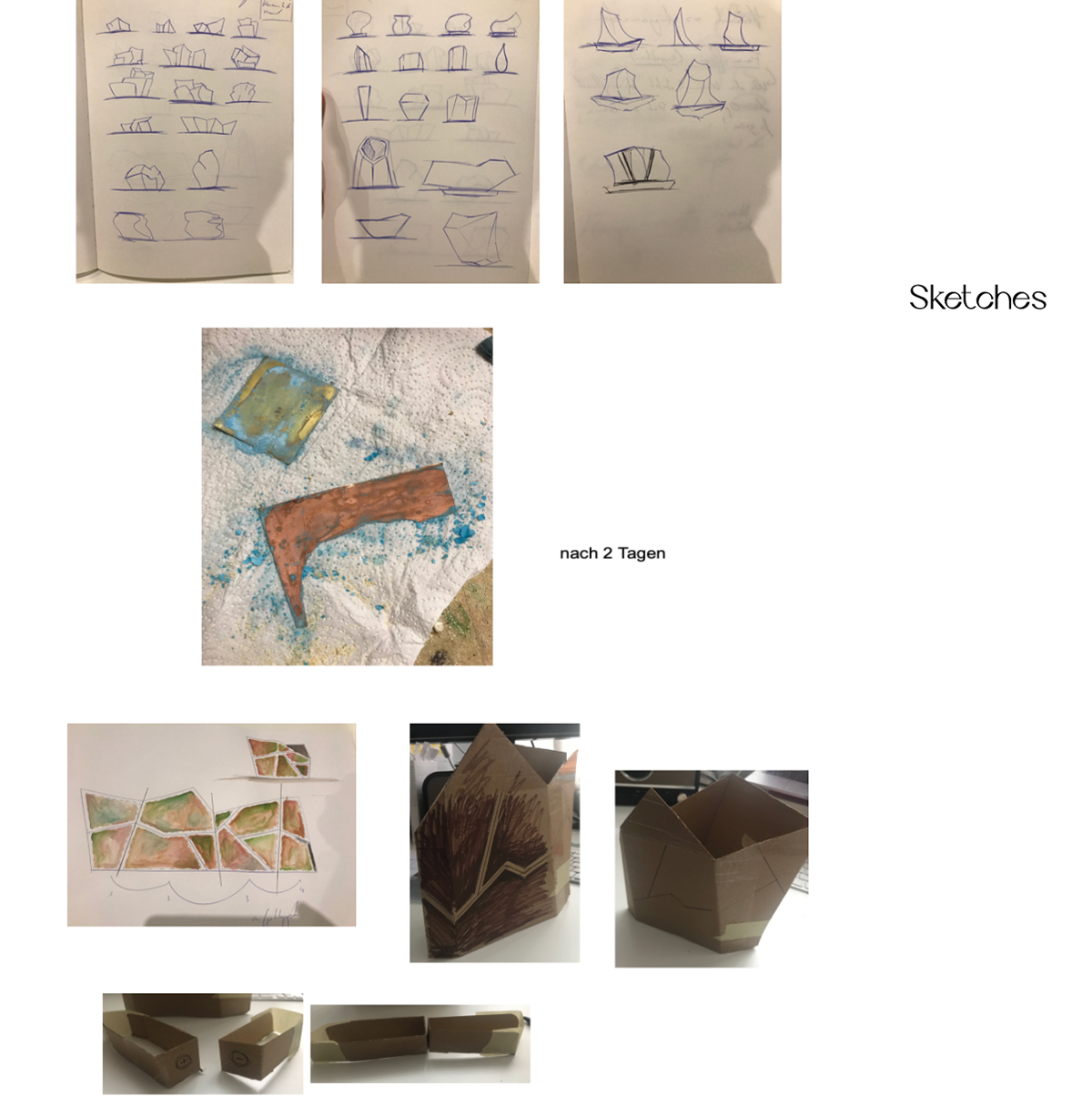






Project: Homo ludens - Patinapuzzle

In this semester, our topic has been the homoludens - the playing human. It is a book by Johan Huizinga which not only analyses the context between "play“ and "culture“ but also gives us the influence of "play“ on "culture“.
In general, for this semester, we needed to design a real working model for our idea. It had to have the right materials and it also needed to work in terms of function. However, this semester, as we are still dealing with the corona virus, it has been quite complicated to build a real product with these kind of terms. But I was lucky enough to be able to make my product at home.

For me, the note "play“ has something in common with "destroy“. Pablo Picasso once said: "...the urge to destroy is also a creative urge...“. In my childhood I played soccer a lot. And the list of broken things (most of them were decorations) is quite long. So that is my second note "decoration“ on the topic.
Two inspiration for my project are the walt disney concert hall in Los Angeles by Frank O. Gehry and the japanese repair method "Kintsugi“.
The aspect, which inspires me the most is that the picture of the hall is taken after the rain. The building itself is made out of titanium. When titanium gets in touch with water, it turns into a slightly golden color. Almost like a watercolor. Frank O. Gehry also said in an interview: "i always wanted to paint on a facade“.
This leads me to the topic "patina“. The ones which gains this effect from the rain and the actual surroundings. What I found out, is that, when you treat copper with water it gains a special condition. It is a protection of the material itself. Therefore, it is a patina.
Basically, when dishes, or in this case a bowl, gets broken. Kintsugi uses gold as a glue. That is why it is expensive. Its increases its value. I not only really like the look of it, but also to see something is destroyed and gets more value after it has been repaired.

The actual product should look like a small statue. I found a substance which brings the effect of the patina on copper a lot faster in an online shop. To visualize my approach, I made it out of cardboard and also drew the break lines to have a feeling in building this puzzle. At the bottom we can see my thoughts on how to destroy the puzzle and put it back again. I thought magnets would give me the right solution for that problem. However, another problem was that copper isn’t magnetic. Therefore, I thought the basis of the puzzle should be wood. In this way, I can integrate the magnets, a lot easier into the construction made out of wood. Moreover, the copper pieces could be glued onto the outside of the puzzle.

During the process, the shape of the project has changed a little bit, because it was sometimes complicated to build it with no machines. When one thing, did not get the right shape, all the others parts had to overhaul this small mistake. What we can see is the process incorporating the magnets into the wood and also how the pieces were cut. On top of the right side, the pictures shows us how I tried to come to the present form by making this puzzle. The corners of every side were polished by hand. Because I had no buzz saw, so I could not made one cut in the desired angle. Thats why I had to polish it.
After that, I came to the final form of the puzzle, I had to mill shapes out of the wood. Because these lowering should define the copper pieces, which were glued to the wood. These pieces are important to "destroy“ the material, which in fact isn’t a destruction. The same is with the magnets in the wood.








https://youtu.be/tuiZy9WBXRU




